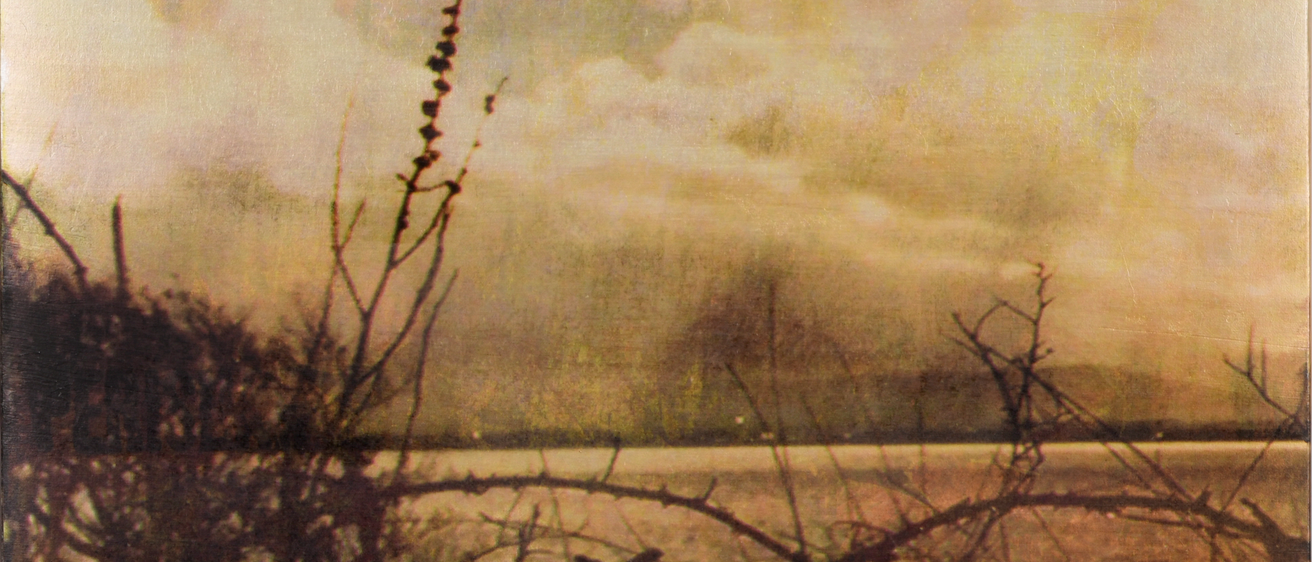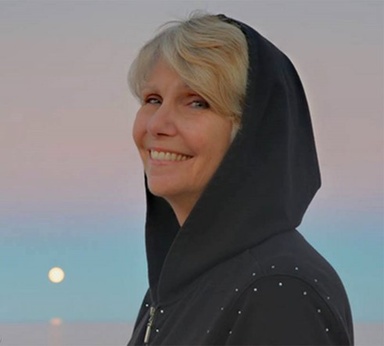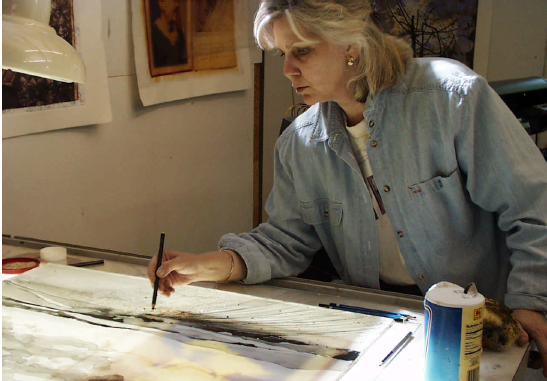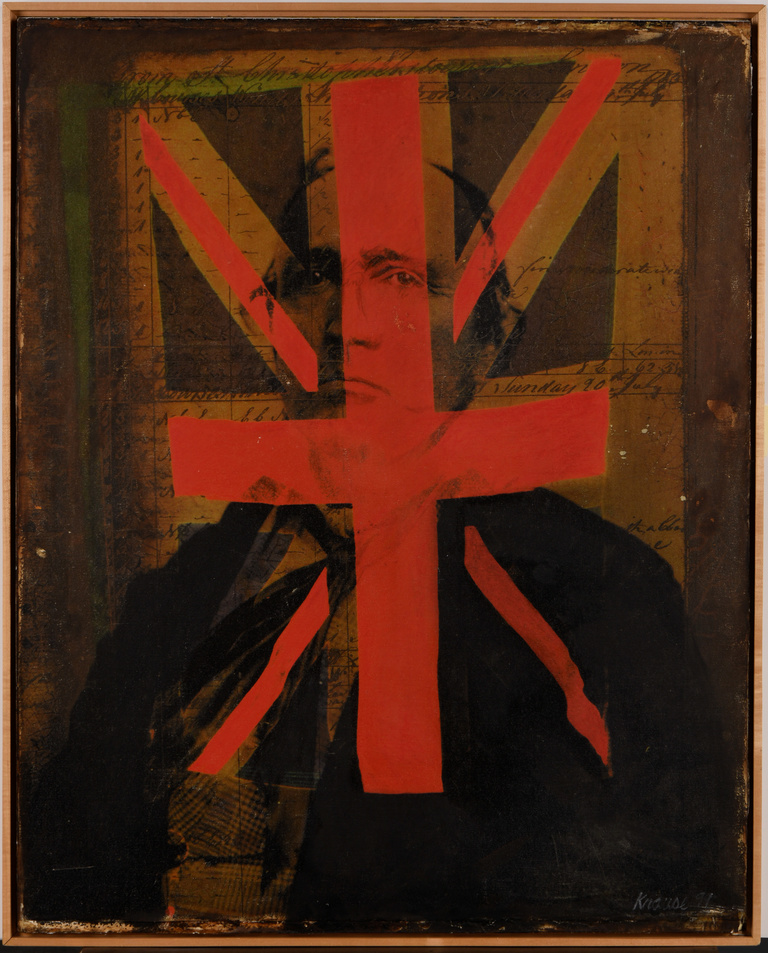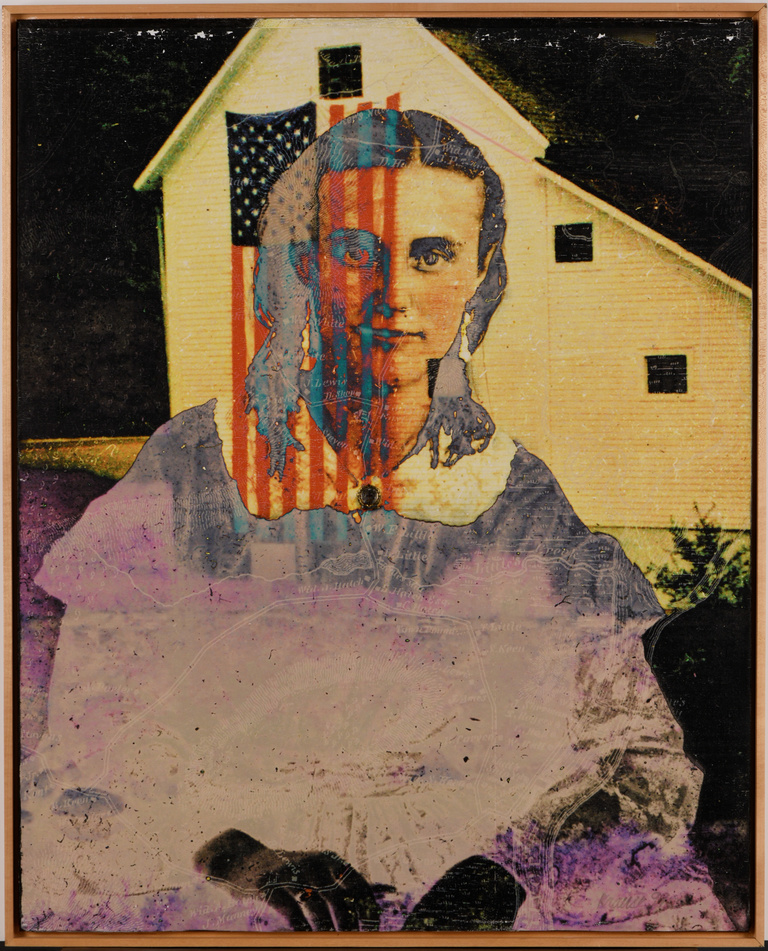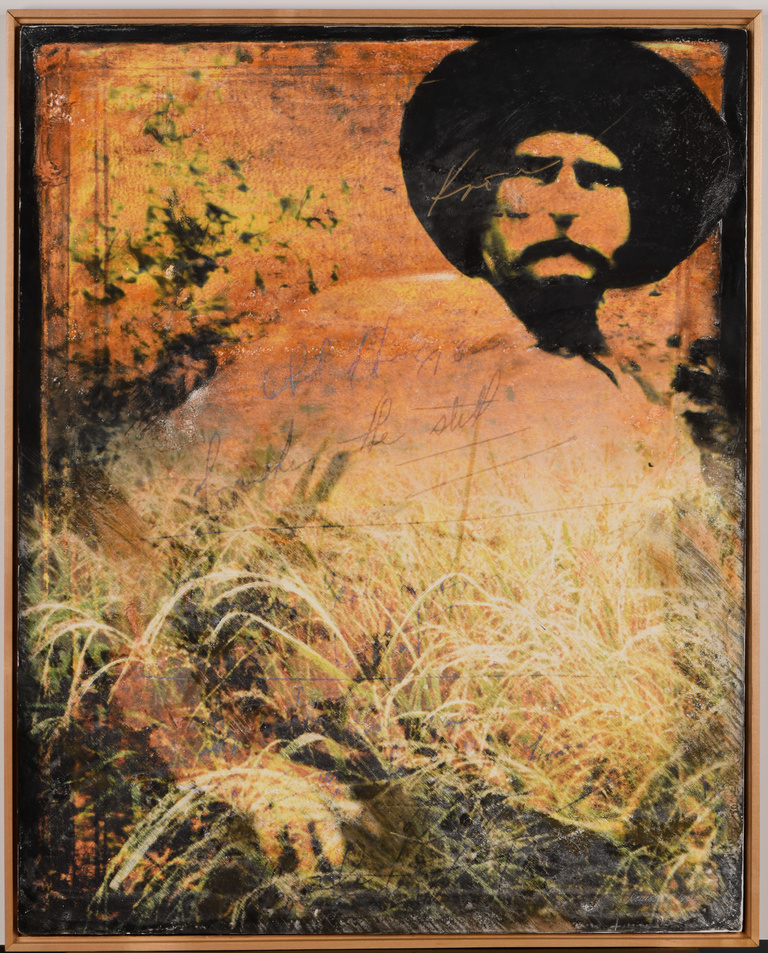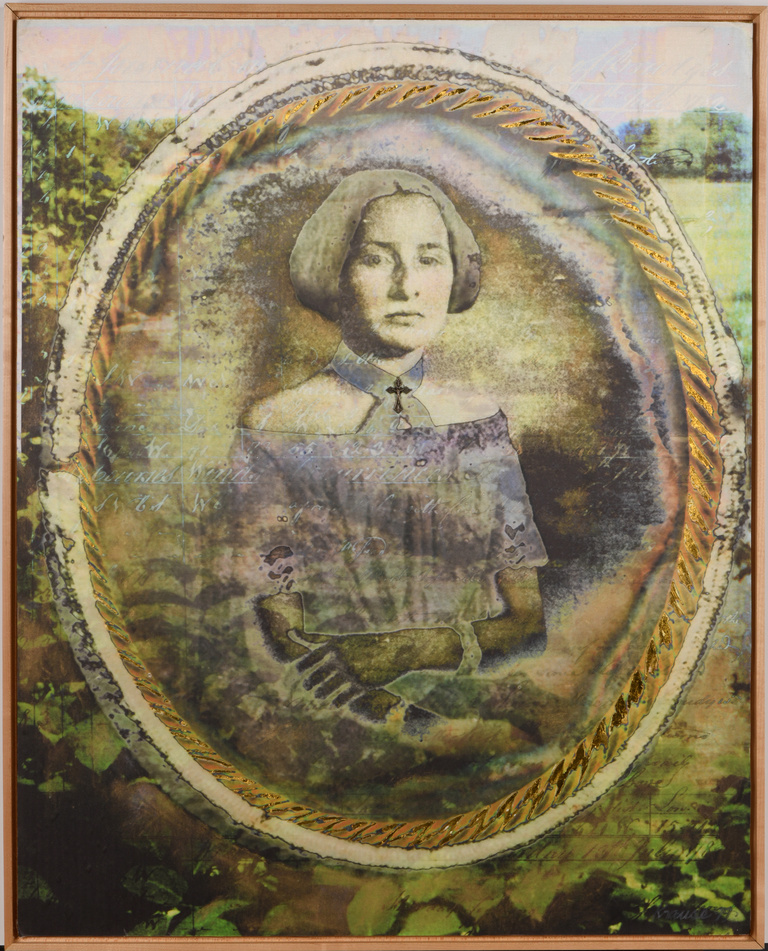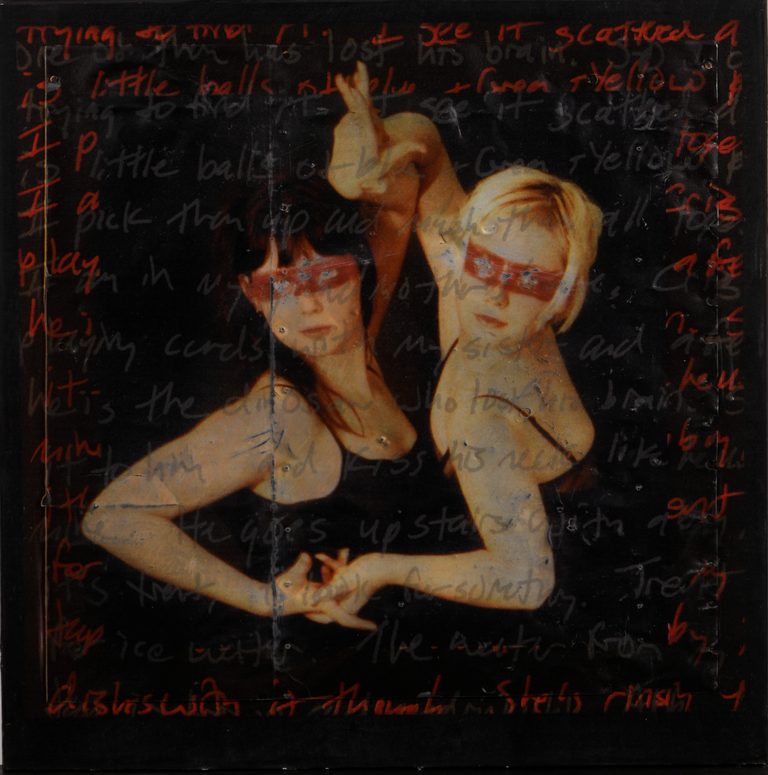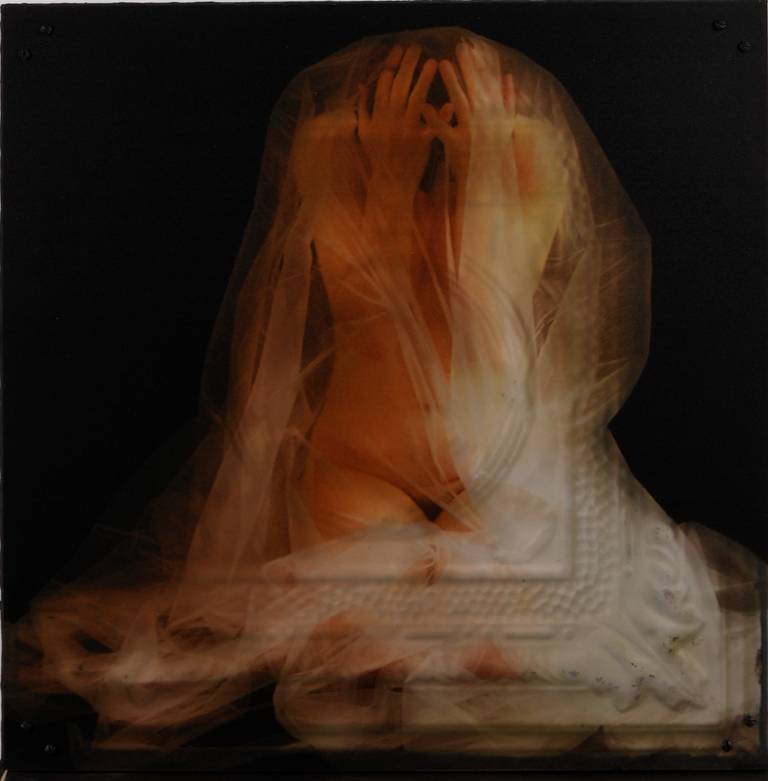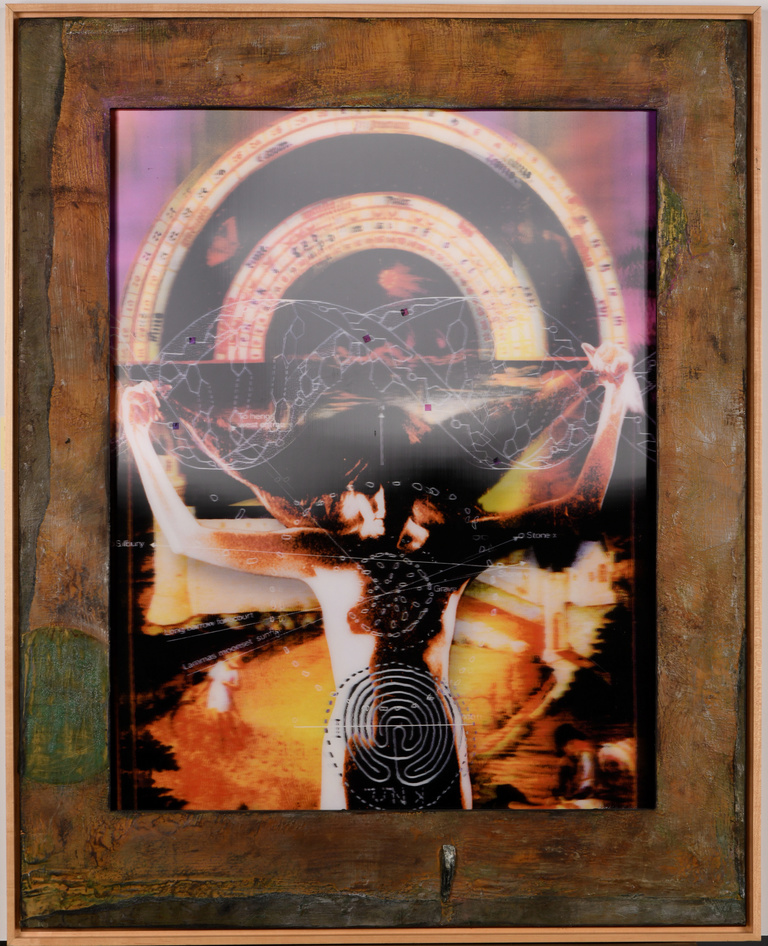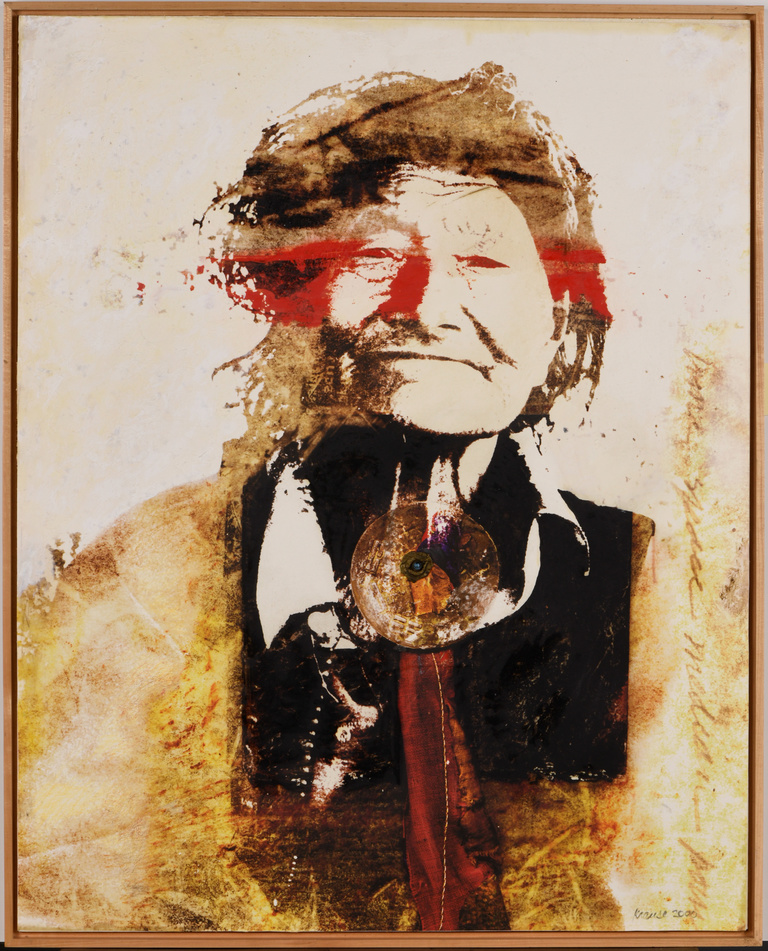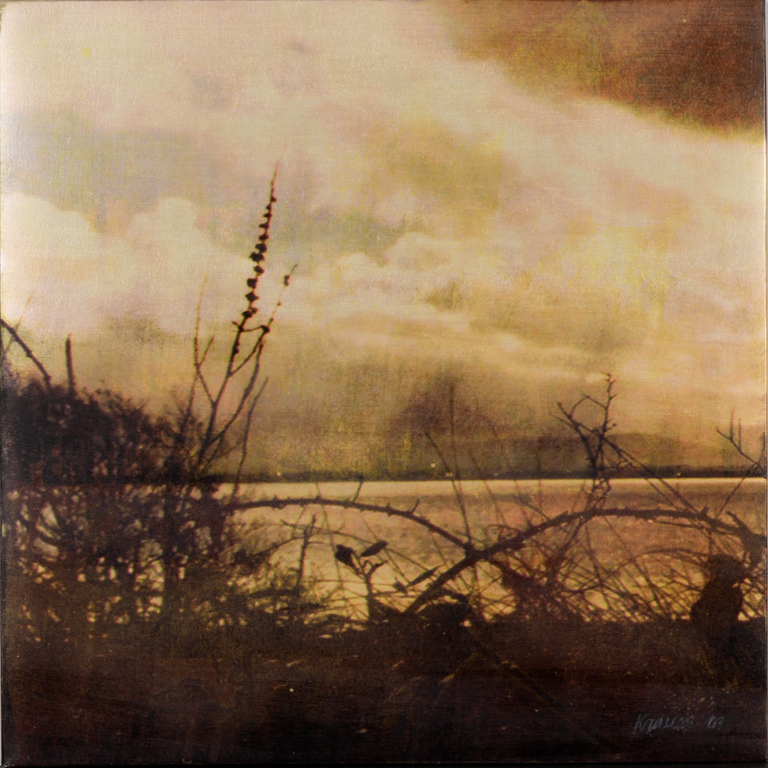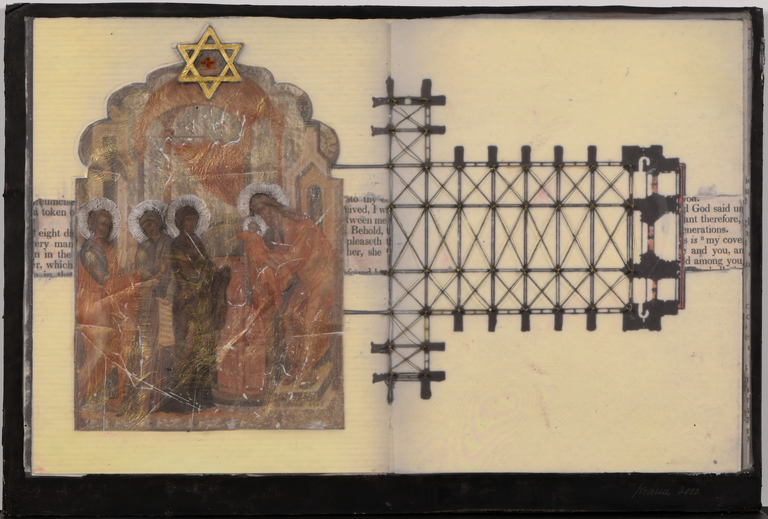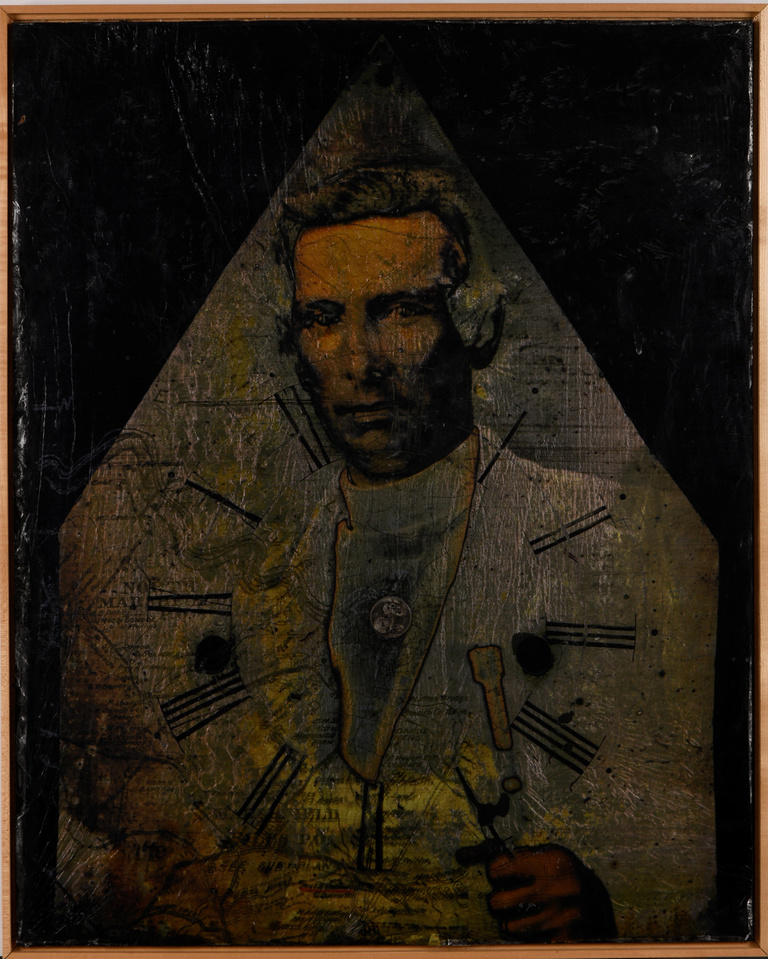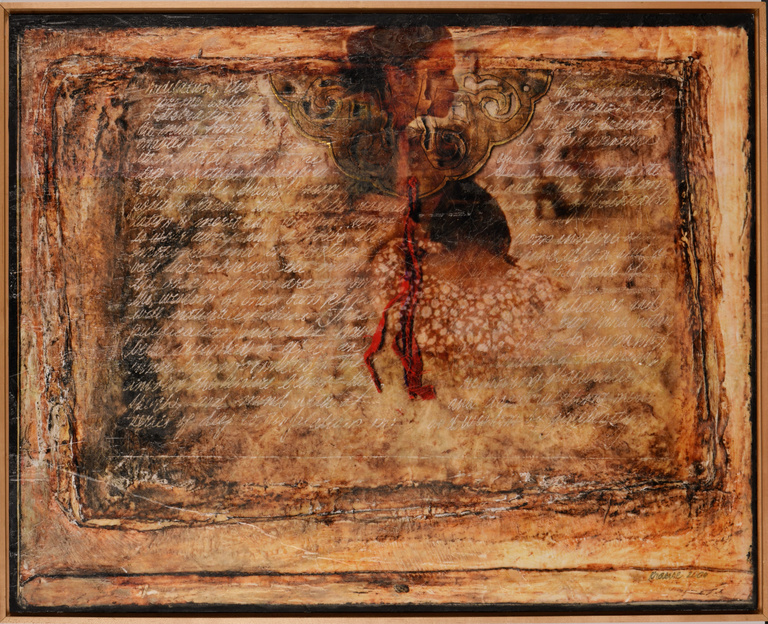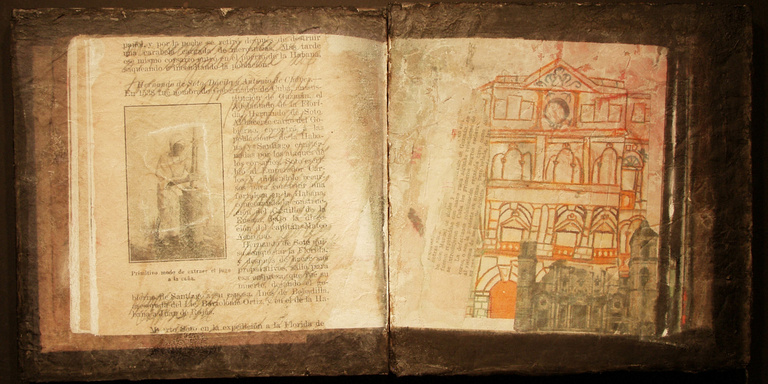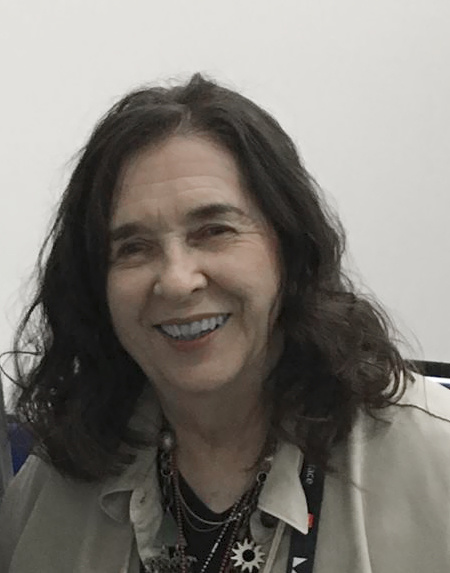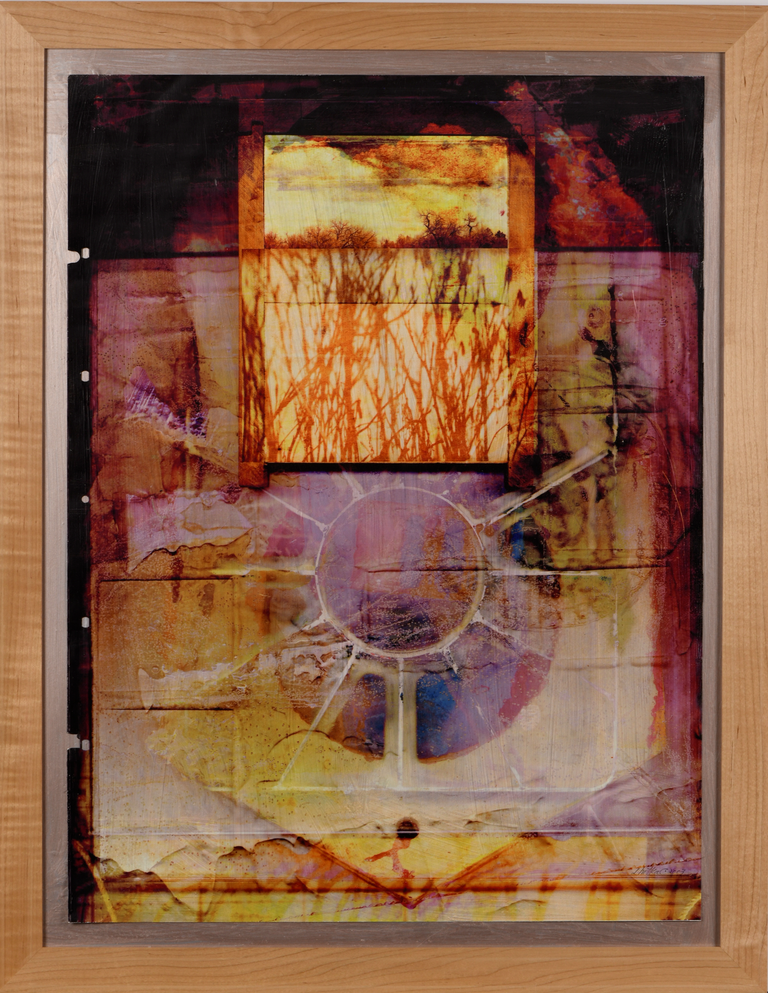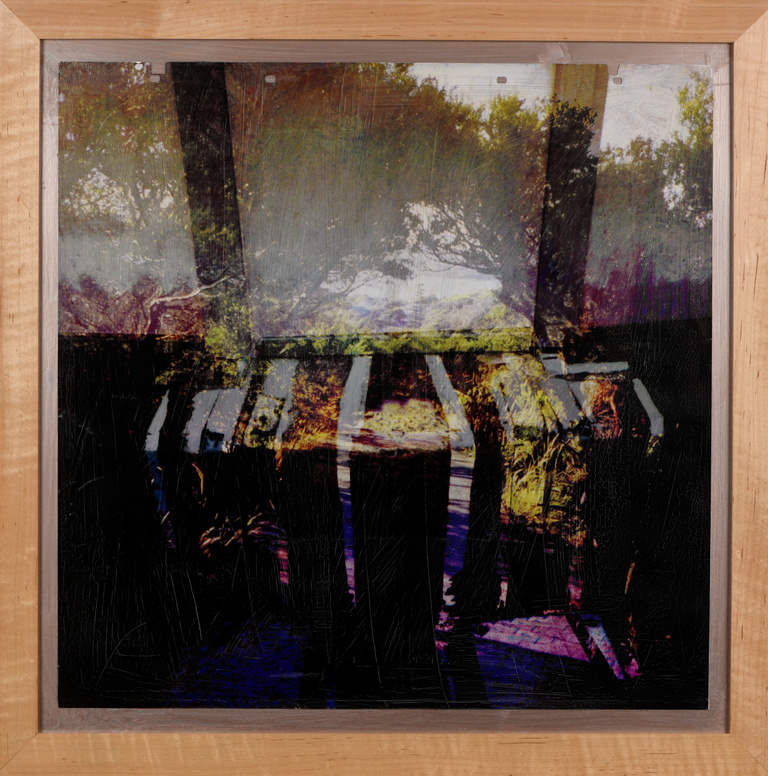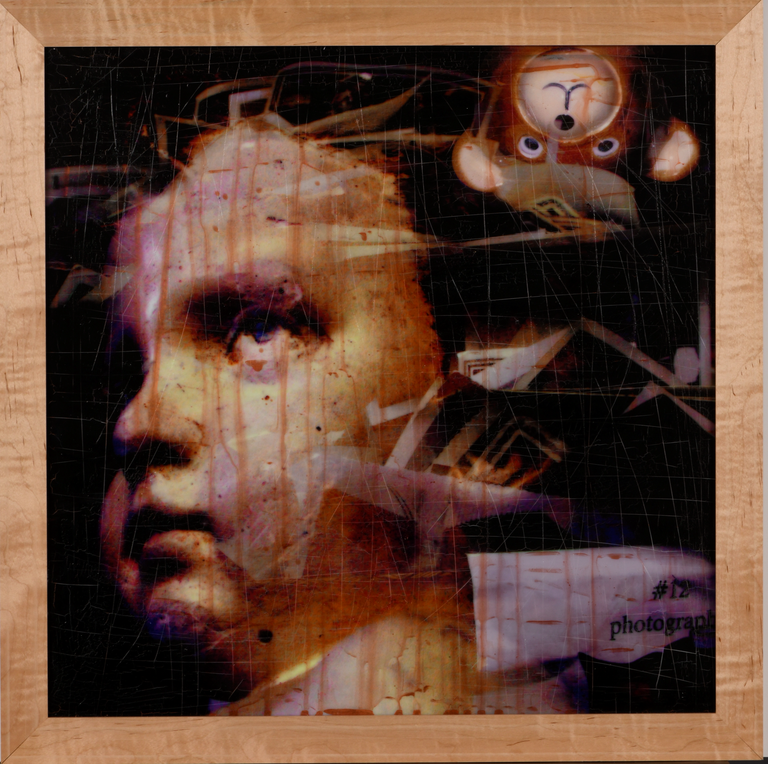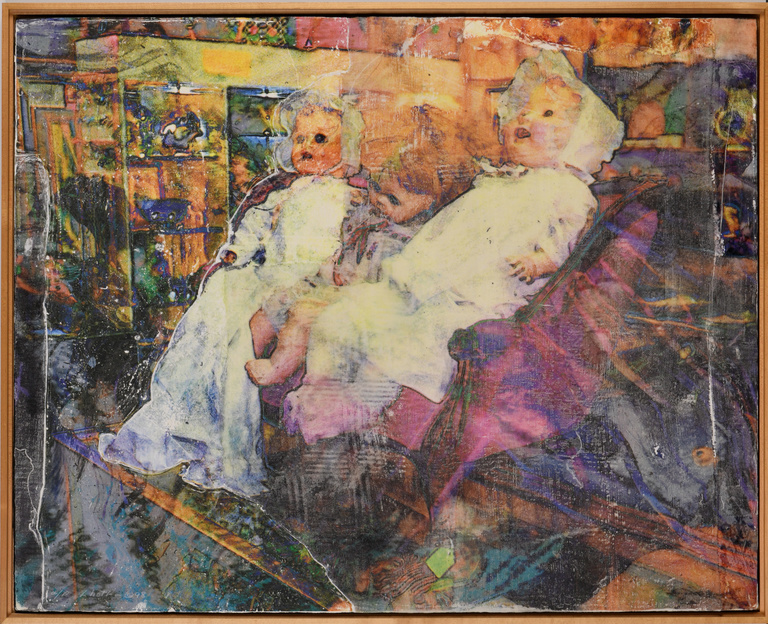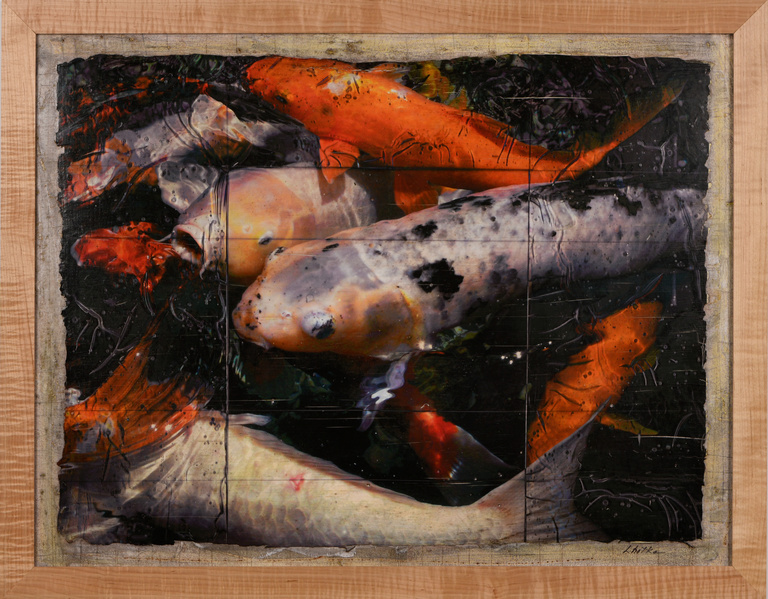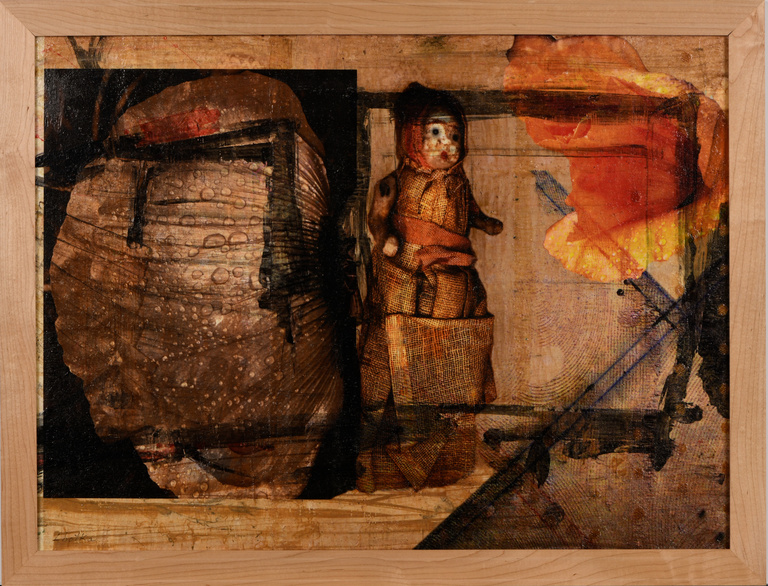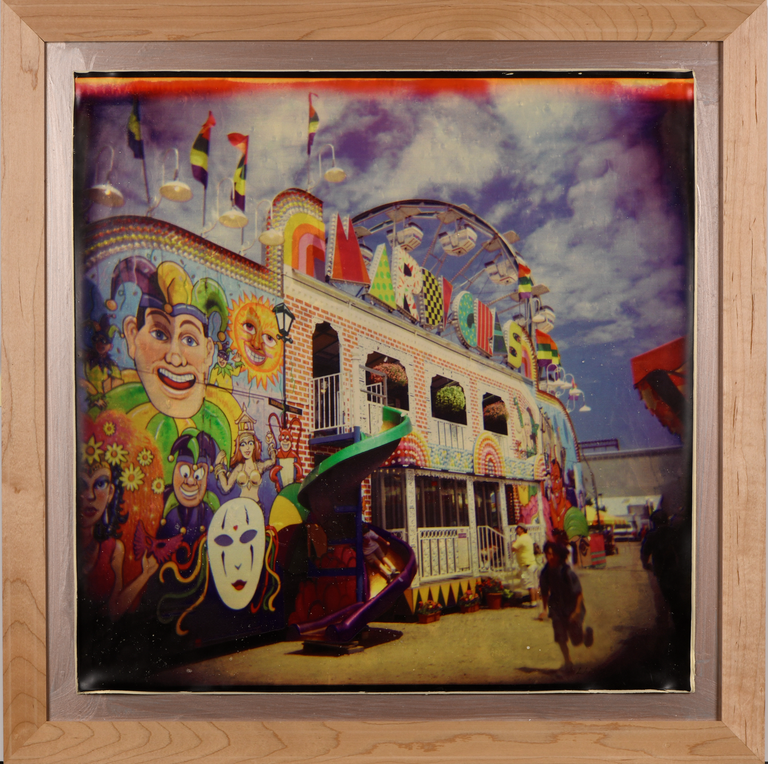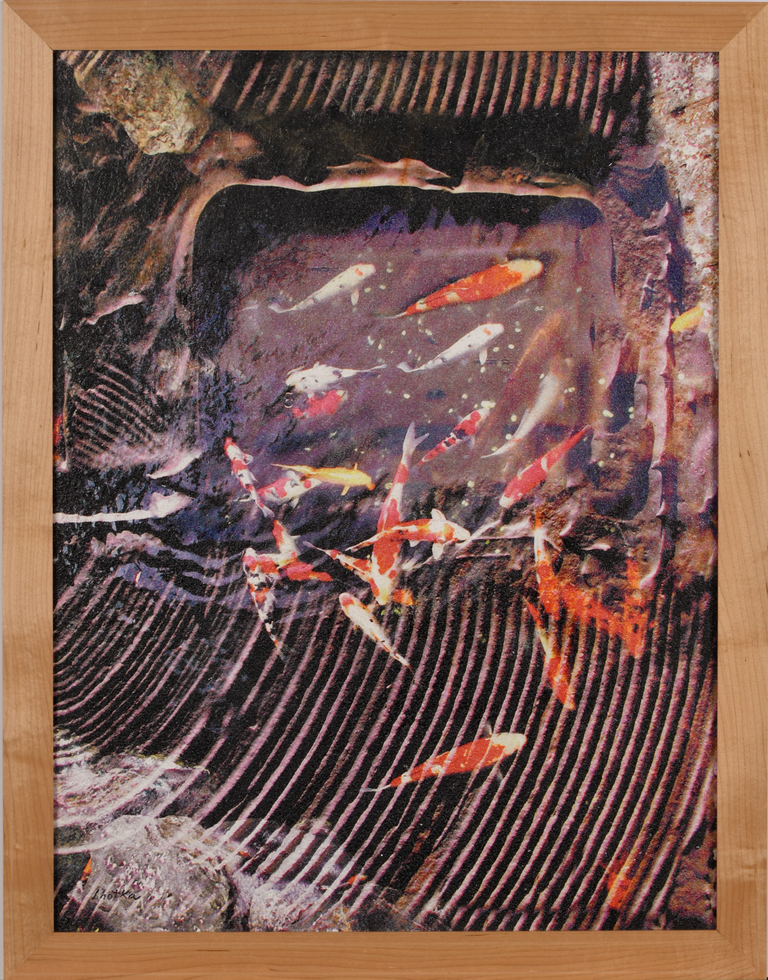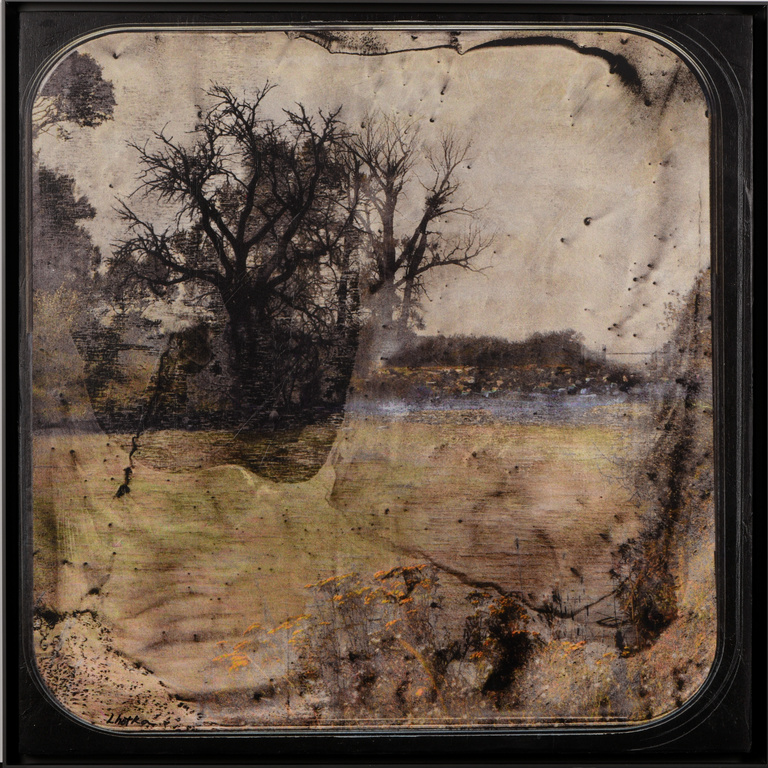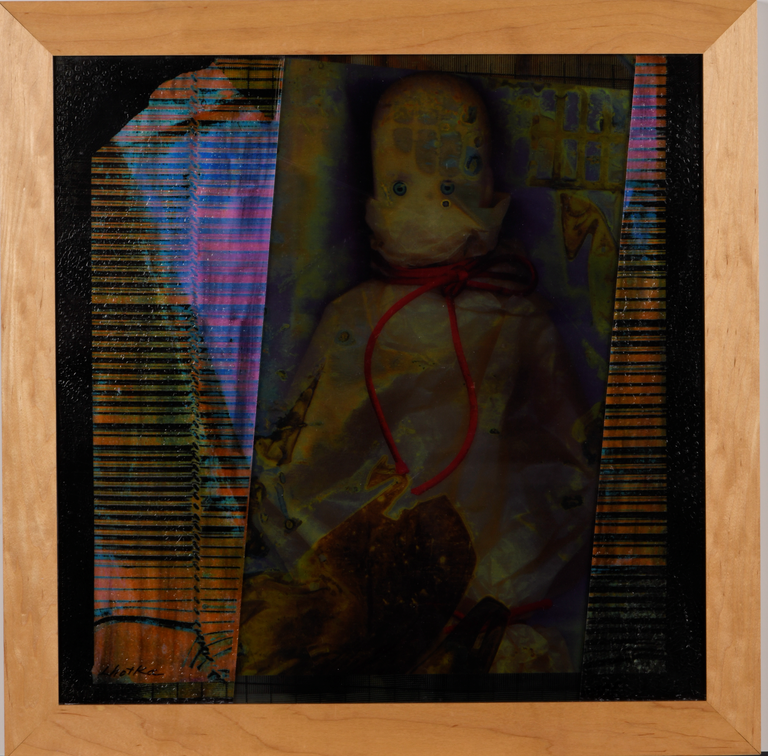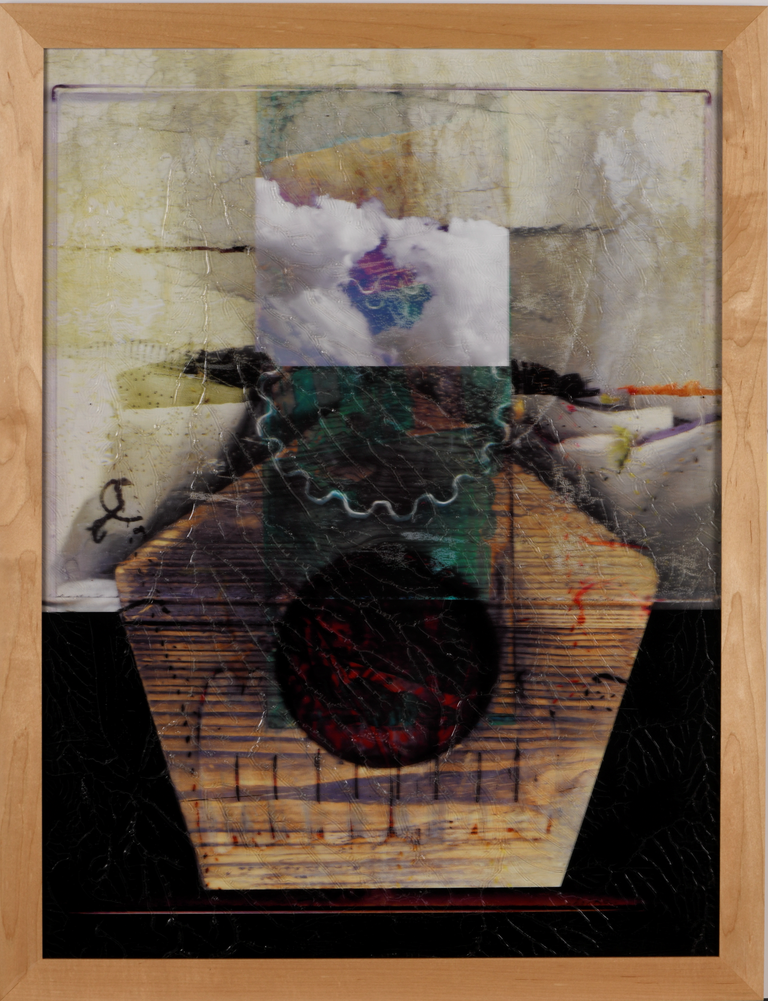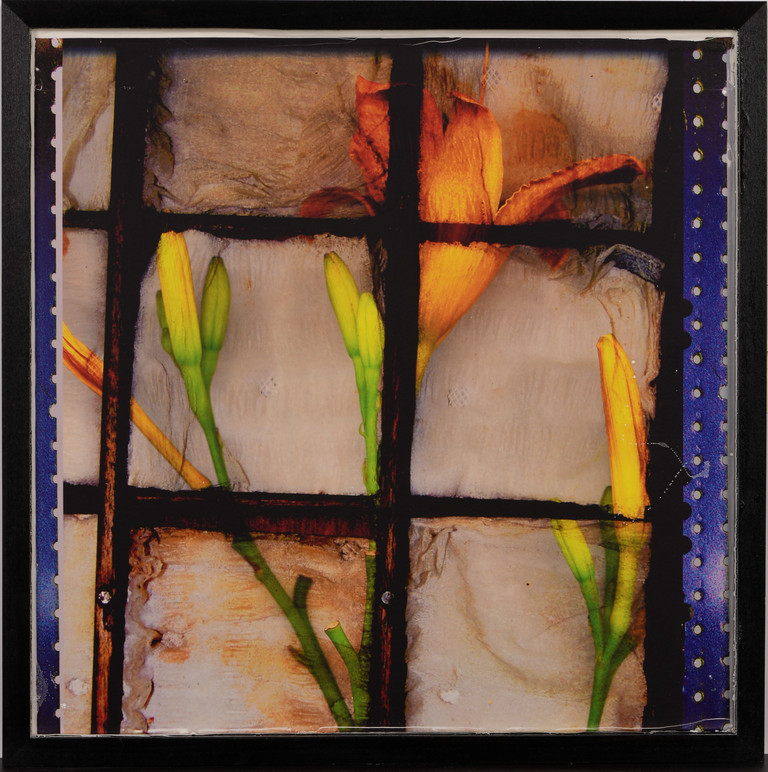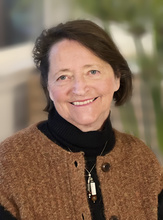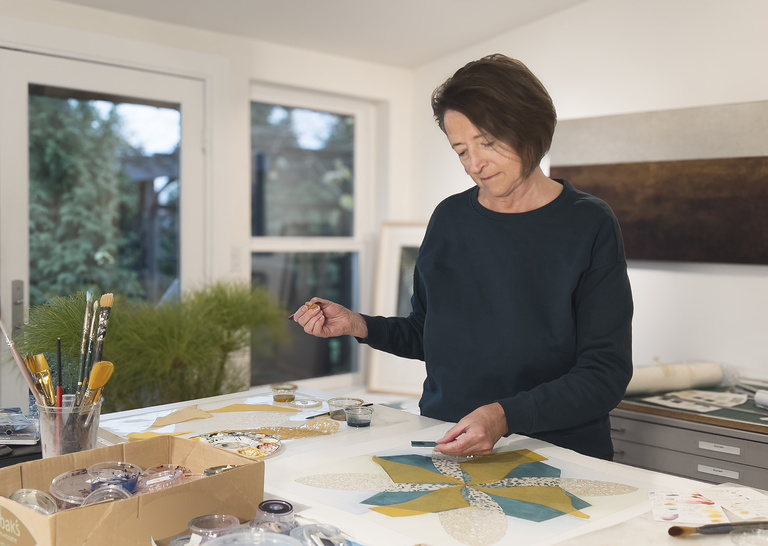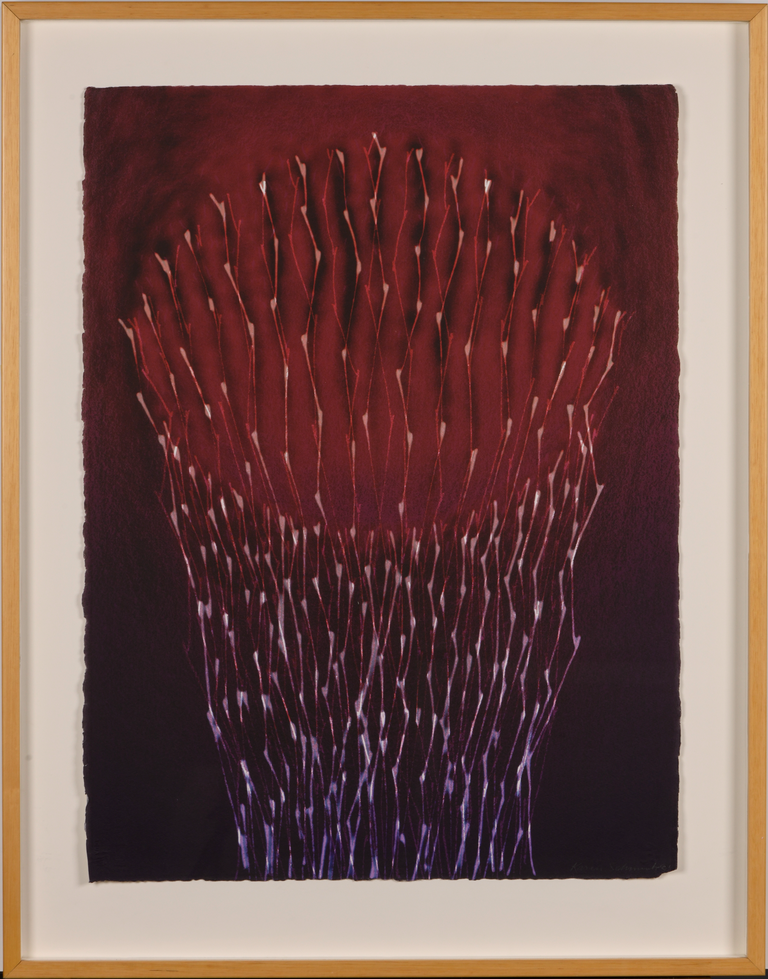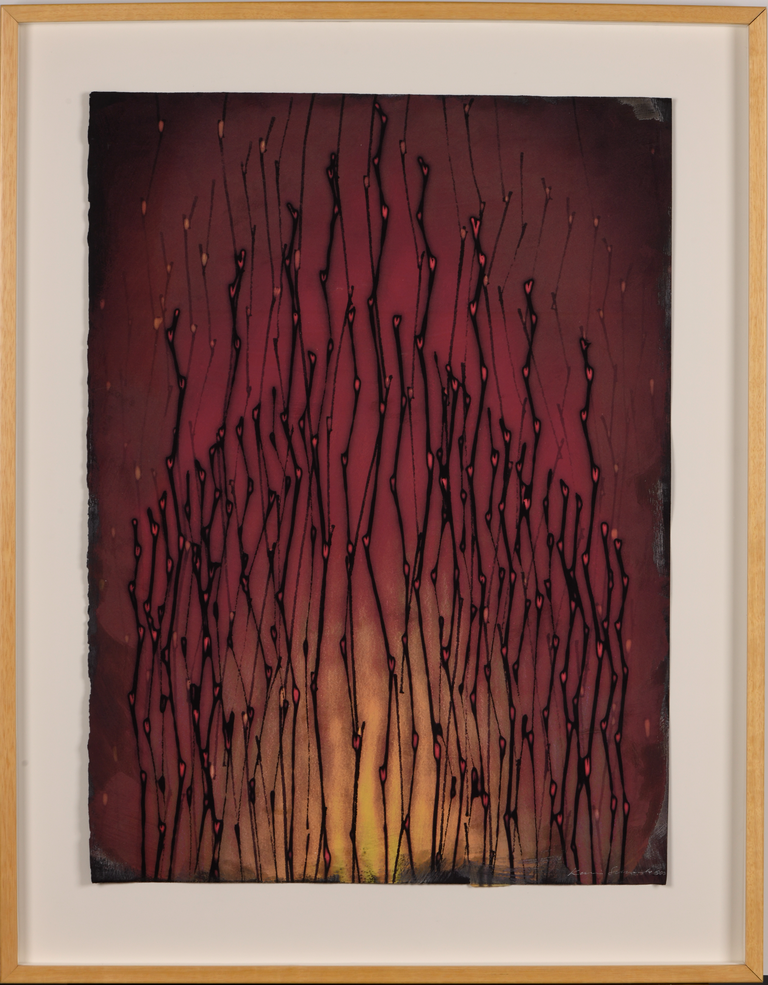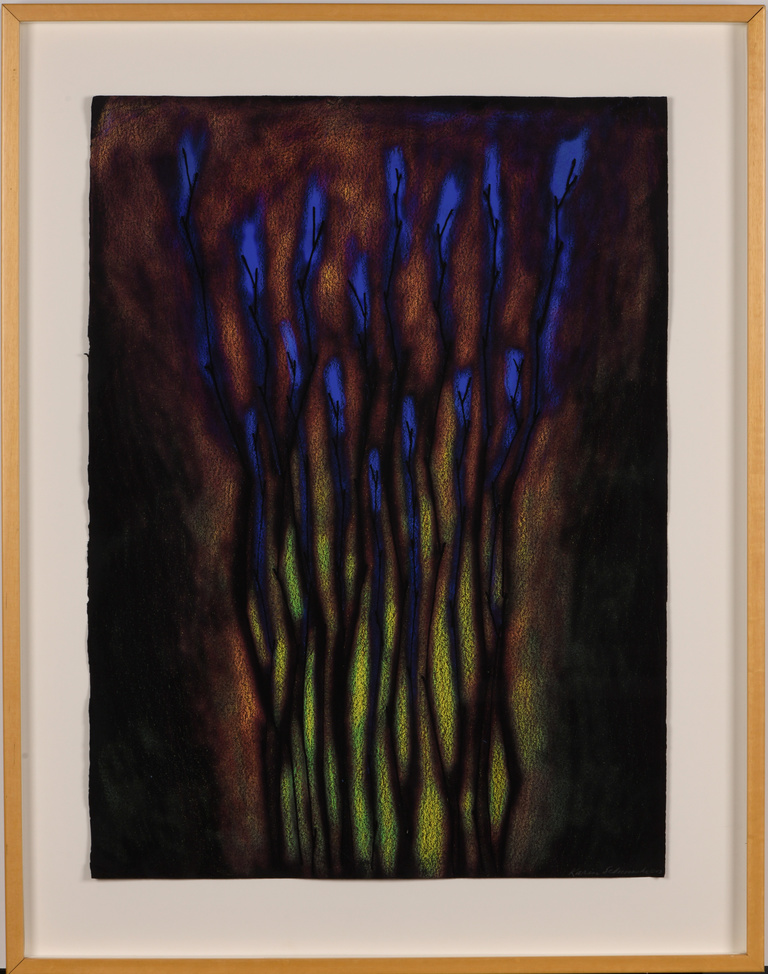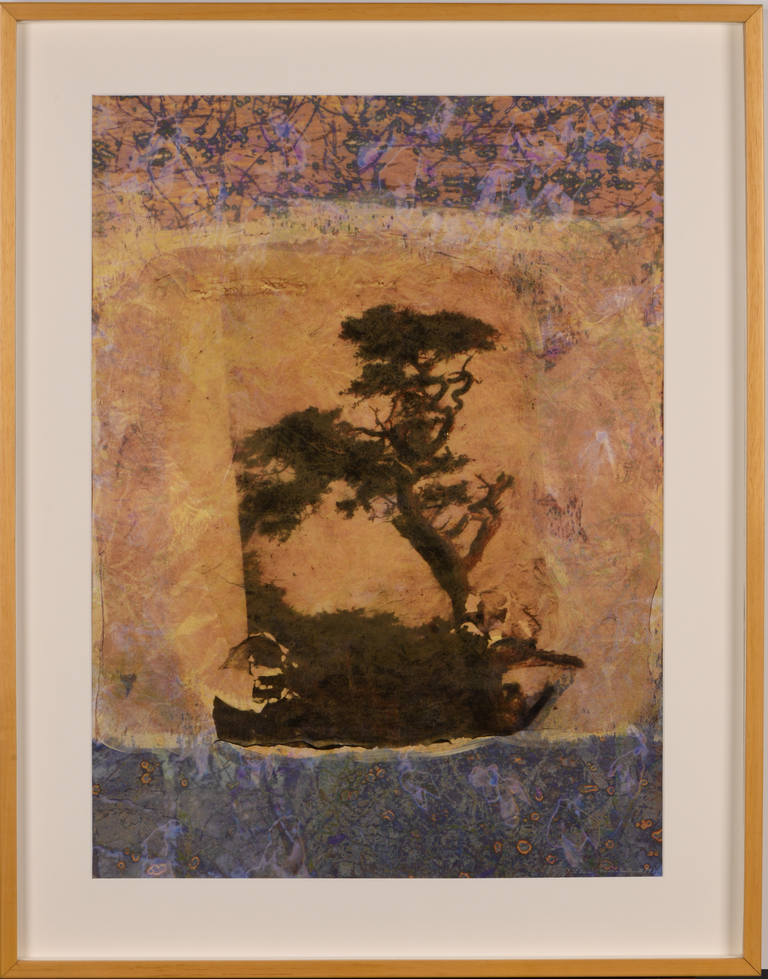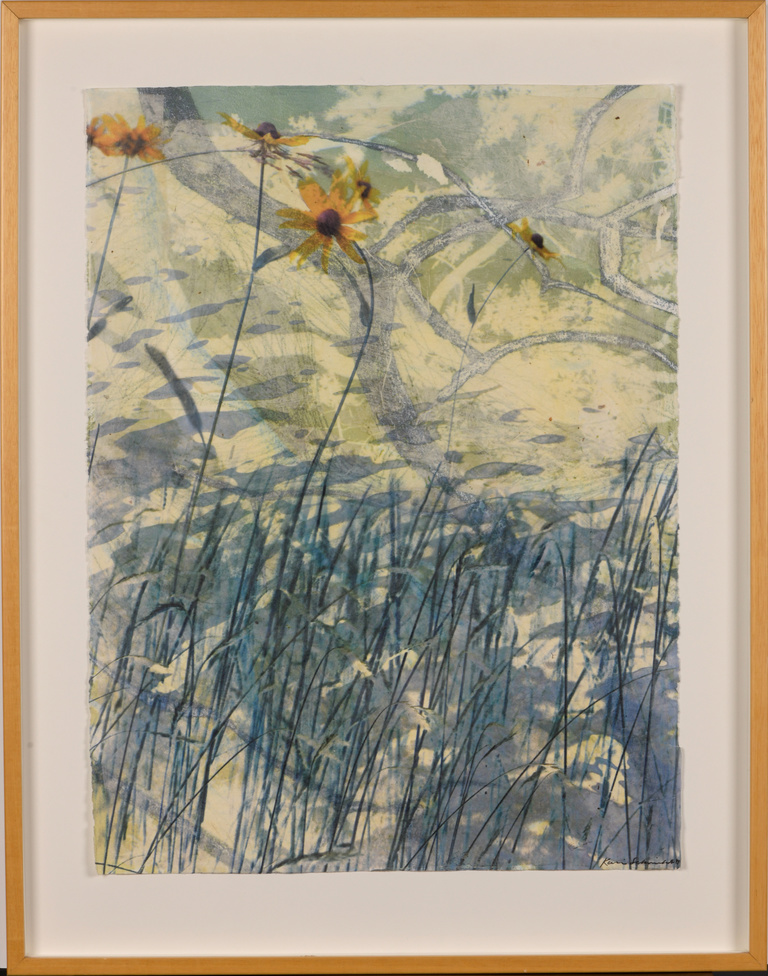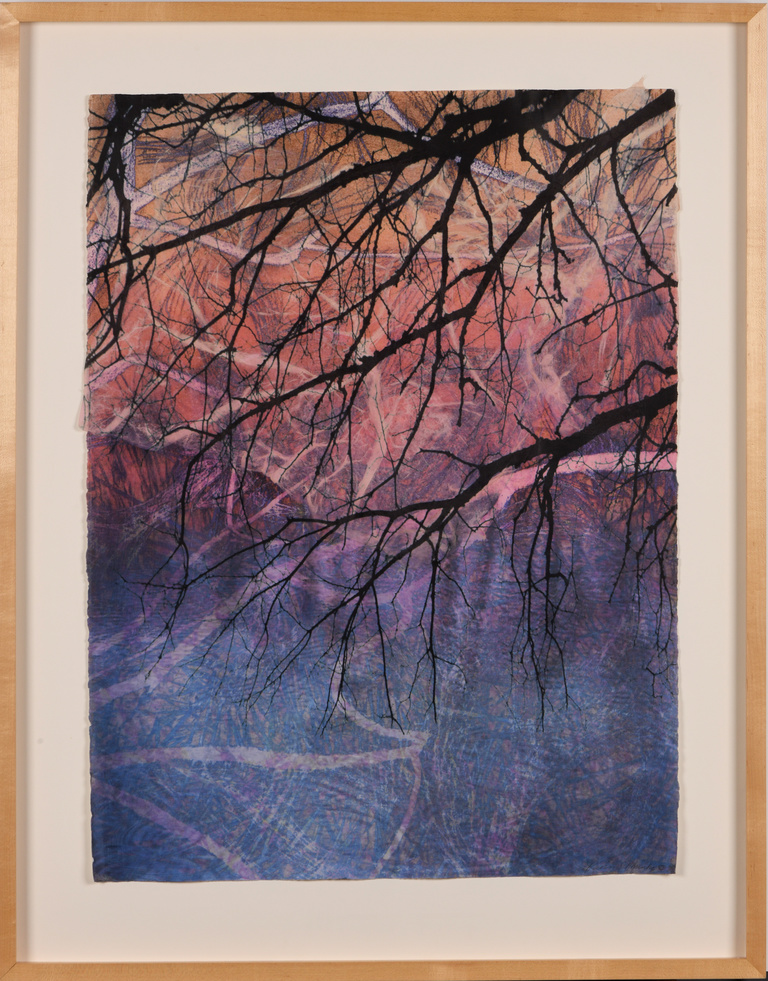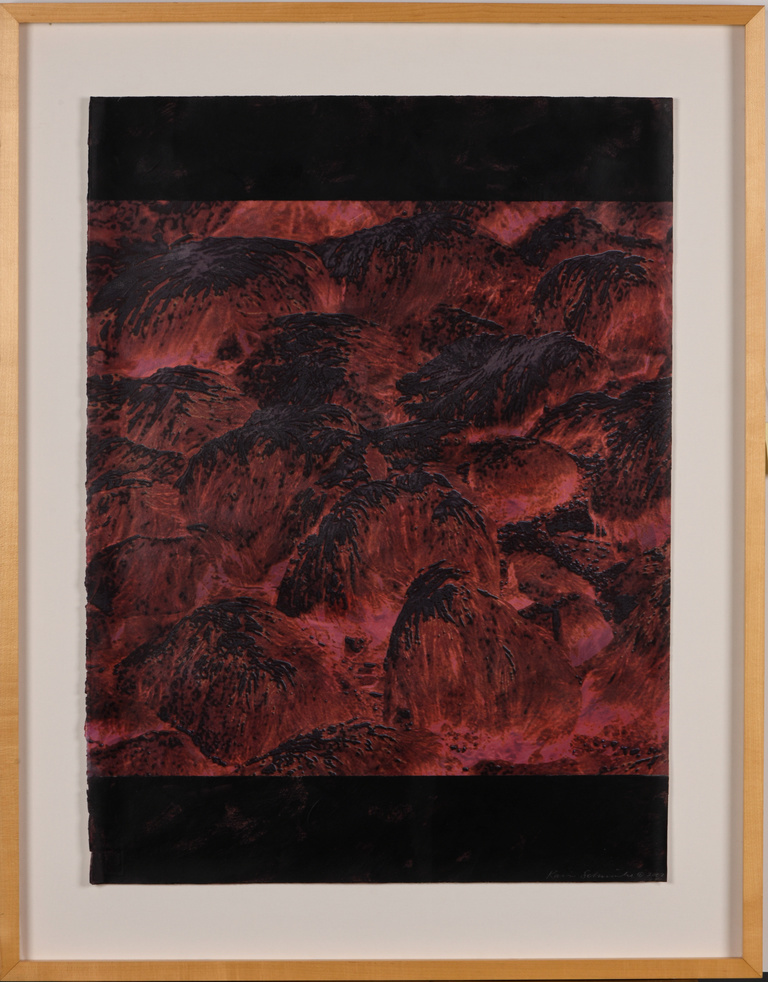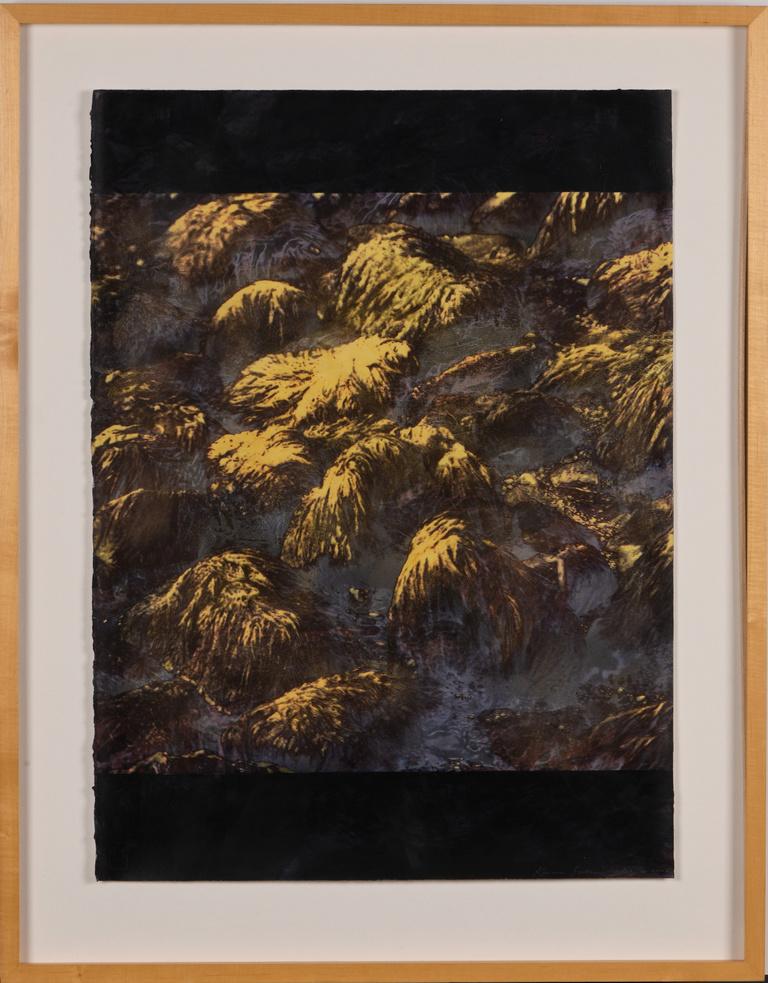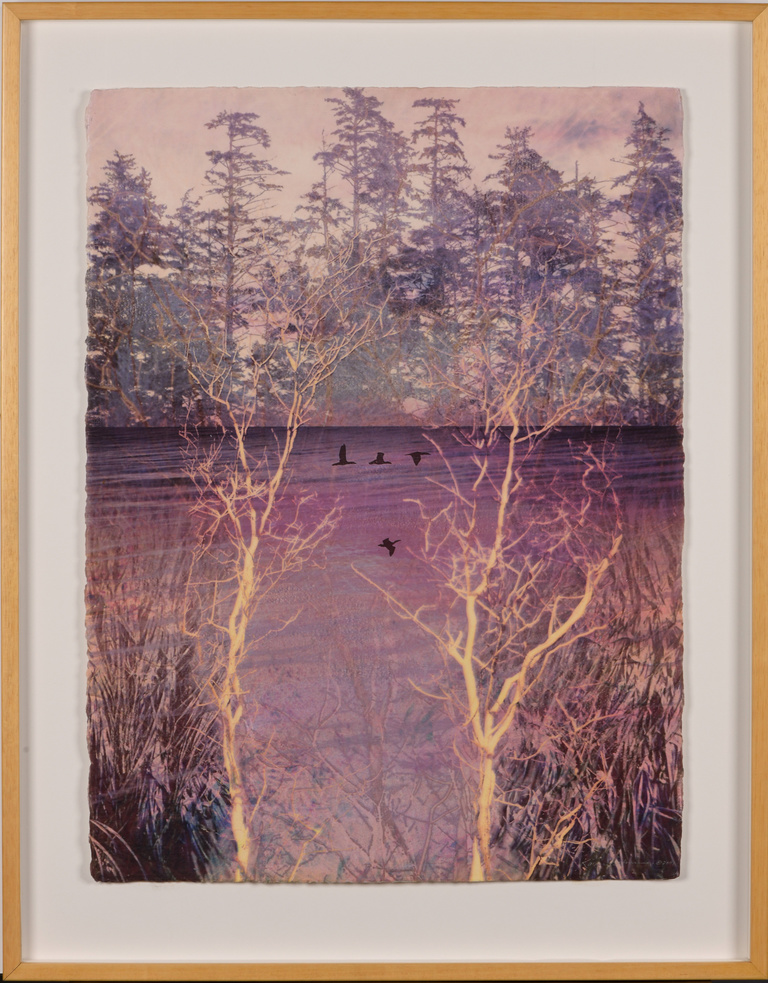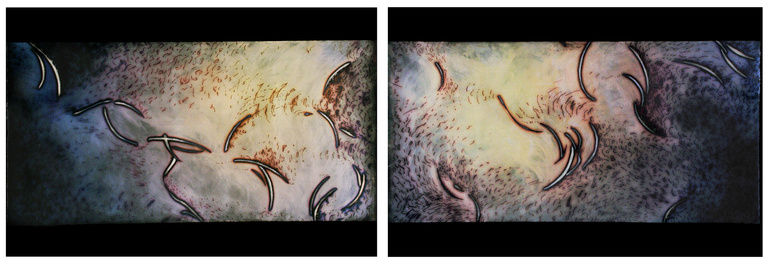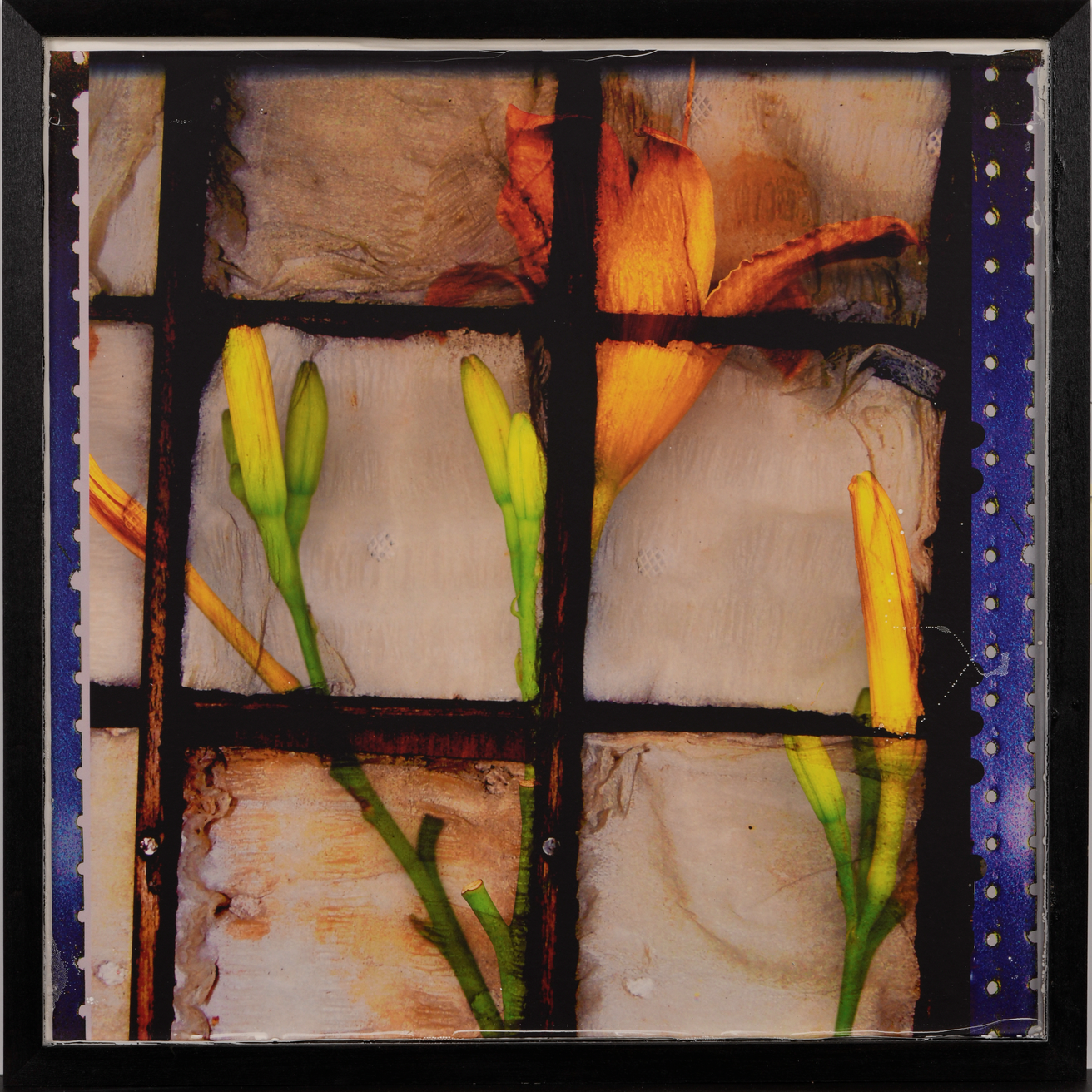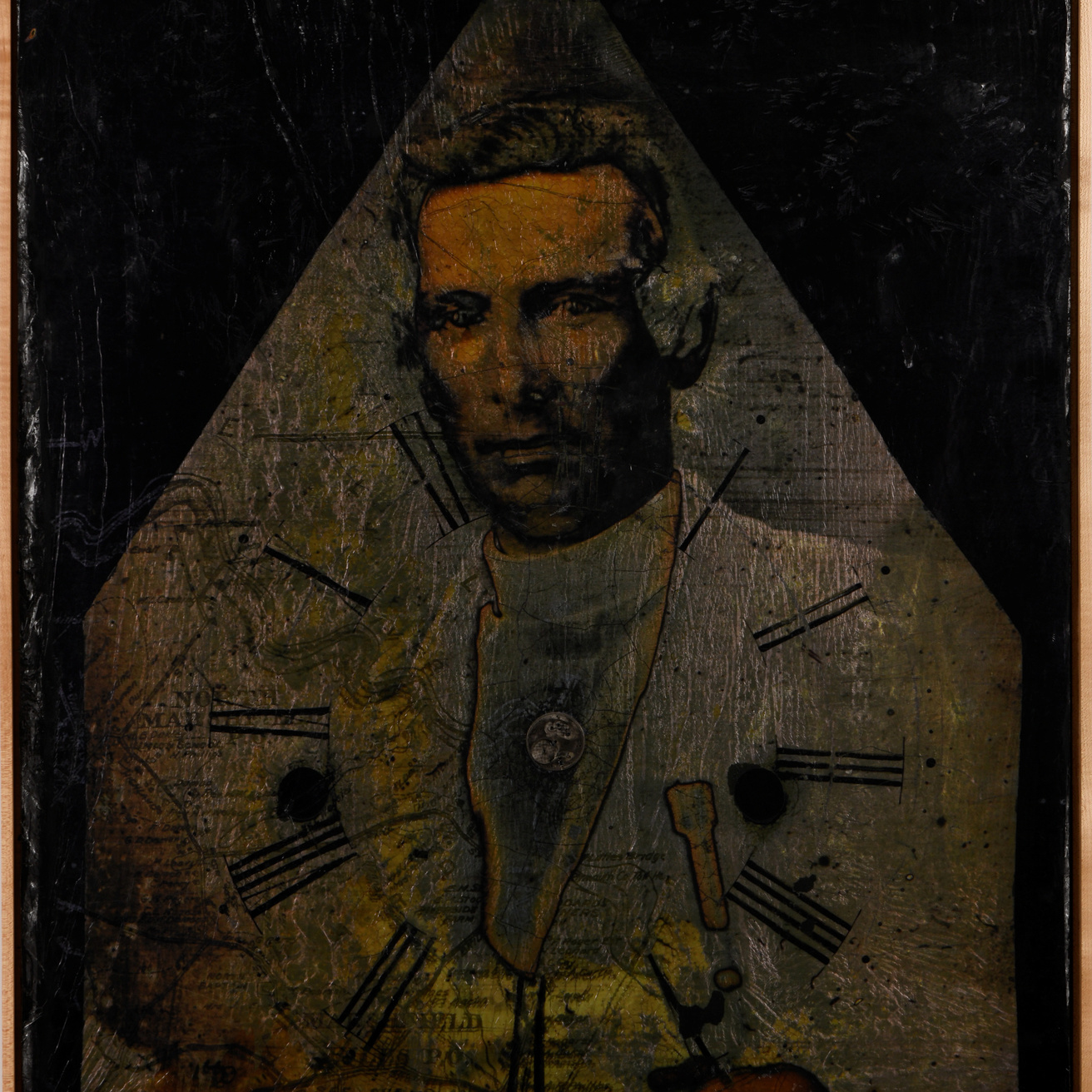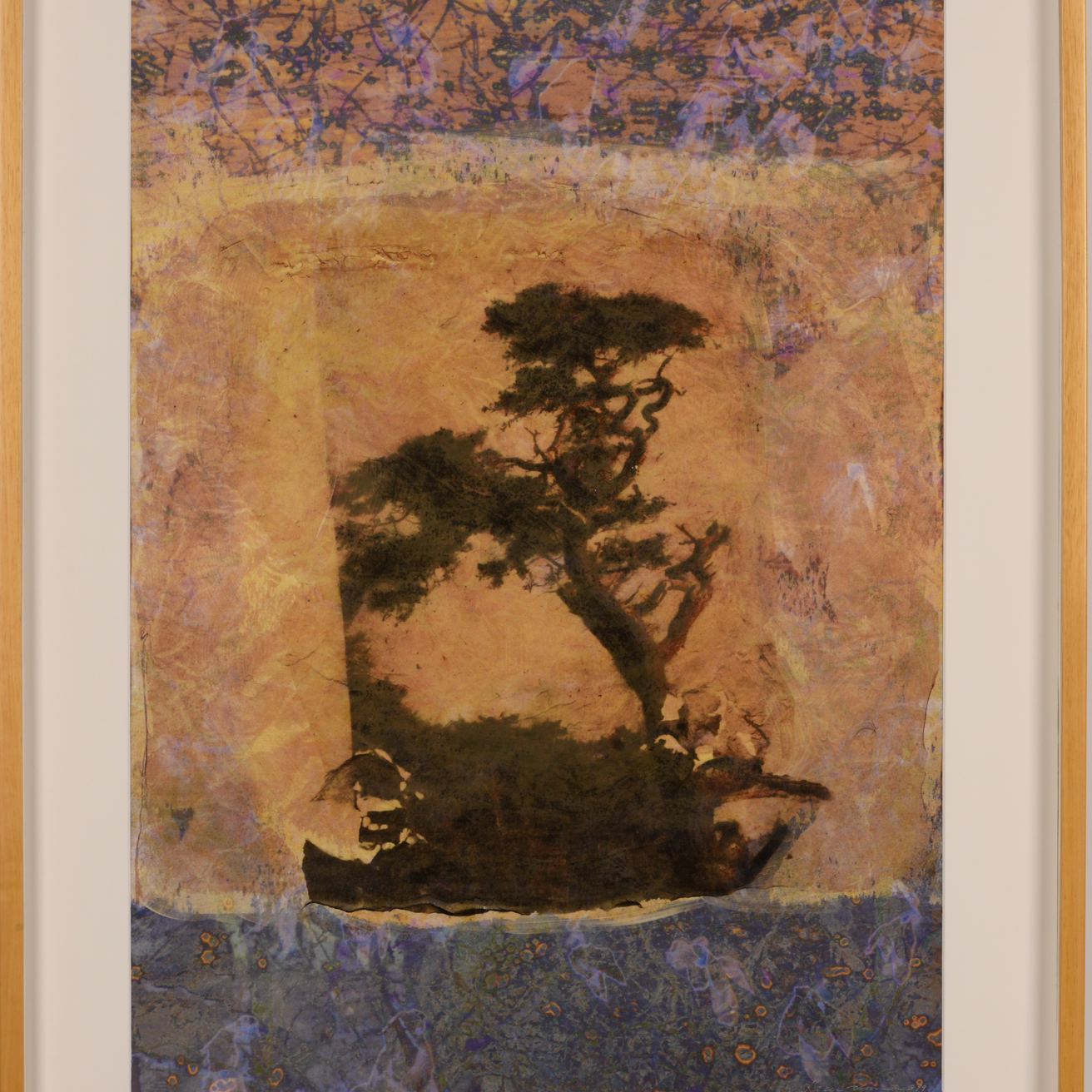Lilly
To create Lily, Lhotka scanned a flower from her garden on the Microtek 9800XL scanner then combined it with a digital photo taken of a wooden tray she found in an antique store. She had a woodworker build a Baltic Birch frame with a recess in the center. The first step was to tape the outer edges of the 32 surround or "frame" to form a well that would hold the fresco mix. The mix was made from rabbit skin glue, pearl pigment, water and an inkAid adhesive. The mix was poured into the taped area. As it cools it set up like Jell-O. The print for the "frame" was imaged on the Encad Novajet 880 film made by coating polycarbonate with clear inkAID inkjet precoat. After the gel sets up the tape was removed. The outer "frame" area of the film was rolled up, aligned with the edge and then carefully unrolled onto the surrounding wood. After 5 minutes the image was transferred to the Baltic birch. The film was peeled off leaving the image on the gel. A second batch of fresco mix was made but this time Lhotka added calcium carbonate to the fresco mix to make the image opaque white. It was poured into the recess in the center. The "picture" image of the Lily was also printed with the Wasatch Rip on the Encad using GO pigment inks. It was trimmed to fit into the center and rolled down after the mix had cooled to a gel. After 5 minutes the film is removed. Because of the calcium carbonate the center dries to a chalklike finish in contrast to the border, which is semitransparent and iridescent. When the frame was built Lhotka had holes drilled into the inner lip of the surround. She purchased piano wire, caused it to rust by placing it in vinegar overnight and used it to lace over the image.
Preacherman
The image was composed from three scanned objects, a daguerreotype which indicated on the back that the man pictured was a preacher, a map and a portion of the face of a 19th century clock. The scans were opened in Adobe Photoshop. The image was printed onto paper using the 50" Roland Hi-Fi Jet printer. A duplicate of the first image was printed onto a heavyweight silver paper. The print on paper was coated with white glue. The surface of the silver print, including most of the silver and the ink-jet receiver coating, was pulled from the fibrous part of the paper to create a transparent/ translucent "emulsion" layer. The emulsion layer was aligned with the paper image and burnished down.
Revelation
Revelation began with a scan of a “failed” image transfer experiment. Various other original photos and papers were layered with the scanned transfer in Photoshop to create an image that suggested the fragility of nature. The Photoshop file was split into an upper and lower image. The lower image was printed on Concorde Bright White paper with a Roland Hi-Fi Jet. The upper image was printed onto Roland gloss paper and trimmed to the edges of the image. Acrylic iridescent and interference gold were brushed onto the surface of the Roland print. After the print dried completely, methyl cellulose and water were brushed and sprayed onto the print to make it very wet. The upper image was rolled out onto the wet print surface. A little hand pressure was applied to the edges of the upper print, assuring contact between the surfaces. The paper backing was carefully lifted off, leaving the entire printed surface on the lower image. After the transfer was complete, a pin and fingers were used to flatten any bubbles. Extra coats of methyl cellulose and acrylic were added to the dried print to create the desired surface.
Research and Educational Activities
In addition to the permanent location of the Digital Atelier in the artists' studios, it also exists as a traveling educational forum to illustrate and evangelize the potential of digital tools for artists.
In 1997, they introduced digital printmaking to American museums as artists-in-residence at the Smithsonian American Art Museum with Digital Atelier: A Printmaking Studio for the 21st Century, for which they received a Smithsonian/ Computerworld Technology in the Arts Award. Later that year, they worked with curators to help them envision the potential of digital printmaking in Media for a New Millennium, a work-tank/ think- shop organized by the Vinalhaven Graphic Arts Foundation. In 2001, they demonstrated digital printmaking techniques at the opening of the Brooklyn Museum of Art’s 27th Print National, Digital: Printmaking Now and in 2009, Digital Atelier, a retrospective of their work, was published as a limited-edition boxed set with book and original art.
The artists of Digital Atelier have given numerous demonstrations, presentations and workshops at venues as diverse as MacWorld, the College Art Association, Photo Marketing Association and art galleries across the country. They conduct research on emerging technologies to share with fellow artists while providing feedback to developers from the artists’ perspective. They have worked with large format inkjet printers and printer media manufacturers since the early ‘90s, to make adaptations suitable for fine artists, including archival inks and increased head clearance to accommodate fine art papers and other thicker media. Their developmental work includes having created processes for transferring inkjet prints to other surfaces and facilitating the refinement and marketing of commercially available paintable inkjet precoats for artists. In 1998, they produced and exhibited the first large format fine art lenticular prints. That same year they were invited to Herman Miller, in Zeeland, Michigan, to explore the potential of digital imaging for office interior design.
Their leadership position allows them to spotlight successful innovation in this rapidly evolving industry, utilize those innovations in the production of their art, and share their work and findings through their numerous writings, exhibitions and activities.
